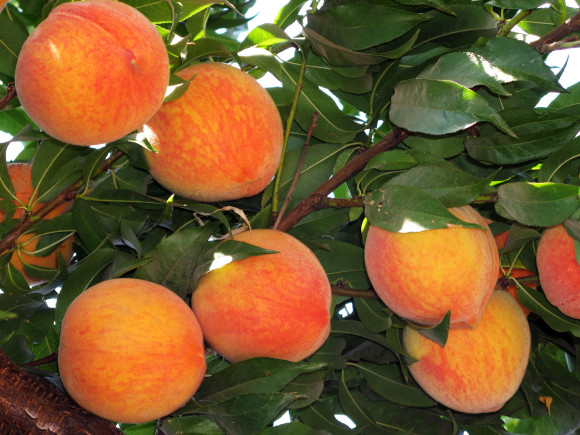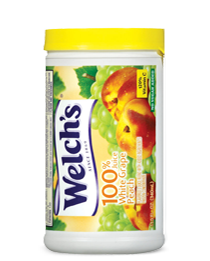Nothing says summer time like peaches and nectarines. In fact, recently one of the viewers of my YouTube channel left a comment requesting a recipe for homemade peach wine. I promised I would post an easy peach wine recipe, so here it is for your viewing pleasure. While this recipe calls for peaches, you can easily use nectarines instead.
When choosing fruit for this easy peach wine recipe, try to get organic peaches or nectarines. The pesticides used on conventional soft skinned fruits are nasty. You may grow your own peaches or have a friend who does. If so, you are a very lucky person. If not, you may be able to find a pick your own farm, where you can connect with the trees that produce the peaches for your wine.
There are several types of peaches, too. Go with what you have available to you. You want your fruit to be really ripe, but not over ripe. That will produce the best wine with this peach wine recipe. If your peaches are not ripe, wait for them to become ripe. If there are brown mushy spots, you will want to cut them out, too.
You will notice that this peach wine recipe has some other ingredients in it, like Welch’s frozen concentrate and optionally some raisins or dates. The reason I add these things is to add a little extra body to the wine. The lemon boosts the acidity a little, to protect the wine and add a little snap to the flavor.
While this simple peach wine recipe makes six gallons, you can easily half it to make three. If you do so, half everything except the yeast. Still use the full packet of yeast if you half the recipe.
Ingredients for my 6 gallon Peach Wine Recipe
- 18-20 lbs of ripe peaches
- 2 12 oz cans of Welch’s White Grape Peach Concentrate OR White Grape Juice Concentrate
- 1 cup Chopped Organic Raisins or Dates or both (optional)
- 9 Lbs White Cane Sugar
- 2 Lbs Brown Sugar
- Juice of Four lemons
- 1 Tbl Pectic Enzyme
- 1 tsp Grape Tannin
- 2 Tbl Yeast Nutrients
- 12 Campden Tablets
- 5 ½ Gallons of Water
- 1 Packet of Wine Yeast ( I use Lalvin EC-1118 )
Directions for Making This Peach Wine Recipe
Clean your Primary Fermentor and set it up with a nylon mesh bag.
I recommend using organic peaches if you have access to them. Make sure you clean the peaches well in cool water. I like to use a good fruit wash and thoroughly rinse the peaches well, as I do with all fruit.
Cut and quarter the peaches. You should not peel the peach skins off, but you want to make sure you remove the Peach Pit. Some people call the pit a stone. Put the quartered peaches in the mesh bag.
Heat up half of the water to a boil and dissolve the sugar in the water. While the water is heating, use your clean hands to crush and mash the peaches in the bag as best you can.
If you decide to use the optional raisins and/or dates in this peach wine recipe, chop them and heat them up in a pot with a little bit of water. When they heat up, you will pour the mixture over the peaches. You just want to soften them up, you don’t need to cook them for so long. Pour over the peaches when you think the raisins and dates look softer and re-hydrated.
Pour the hot water and sugar mixture over the peaches. Immediately add the Welch’s frozen concentrate to the hot water and stir it up well, continuing to mash up the peaches. After you have it well mixed, add the remaining cold water to cool things off. Tie a knot in the bag, put the top on and let it come to room temperature.
When the must is room temperature, add the Lemon Juice, Yeast Nutrient, Tannin and mix them in well. Then, crush 6 Campden tablets and stir them into the must. Take note of the time as you will need to wait at 12 hours before adding the pectic enzyme and at least 24 hours before adding the yeast. Cover the must and wait.
12 hours later, you may add the pectic enzyme. Please don’t forget this step. If you do, you will most probably have a pectic haze in you end result. Cover and wait another 12 hours.
After at least 24 hours from the Campden tablets and 12 hours from the pectic enzyme, it is time to pitch the yeast. Before doing so, take a Specific Gravity reading. You should be around 1.100, depending on the sugar in the peaches. If you are much higher, you may want to add a little extra water and stir it in. Sprinkle the yeast on top of the mixture, cover and wait for fermentation to start.
Make sure to monitor the progress of the fermentation and stir the mixture with a clean spoon each day. After around 10 days, you should be getting rather low readings on your hydrometer and it is time to rack into a carboy for secondary fermentation.
When ready to rack, remove the mesh bag and gently squeeze the bag with clean hands to extract the wine from the pulp. You can also clean and sanitize a colander and let the bag drain over a few hours by putting the bag in the colander, but I usually never do that. Rack the wine into the clean and sanitized carboy. Discard to contents of the bag. You can compost the peach pulp. Fit the carboy with a bung and airlock and sit the wine aside in a dark location for about a month.
As with all homemade wine making, time is an important ingredient. With this peach wine recipe, there are no exceptions. A month later, rack off any sediment to another cleaned carboy and set it aside for another month.
After another month has passed, rack the peach wine into a cleaned and sanitized carboy. Crush another six Campden tablets and add the powder to the wine. Now, it is time to degass. Stir out the gas with a drill mounted Mix-Stir or a whip completely de-gassed.
Next, I choose to use Sparkolloid to clarify the wine. Follow the directions on the package. I have a video here on how to use the Sparkolloid. After stirring in the Sparkolloid, set the peach wine aside for 10 days.
10 days later, it is time to rack and then filter into a clean and sanitized carboy. The wine with this racking should be pretty clear, but you will want to filter anyway. After filtering it should be crystal clear. I also have a video on using an inexpensive filter that you may want to check out.
Now, you will want to taste your wine. While it is not mature and probably a bit harsh, you will need to decide if you like your peach wine completely dry, or if you want to back sweeten your wine. Please refer to my article on back sweetening for the procedure. If you do choose to back sweeten, you will want to add some Sorbate to the peach wine prior to sweetening.
Finally, you are now ready to bottle. This peach wine recipe will produce around 30 bottles of wine. Age it for about six months in the bottles before tasting it.
I hope you have enjoyed making this easy peach wine recipe. It is a delicious wine that is wonderful to drink on a nice hot summer day while sitting in a hammock. It is also a great wine to drink on those crummy endless winter days, when you need a taste of summer to help you have hope that summer will soon return.





I started peach wine using about 5# of peaches, 2# sugar, 4 pints of water, tannin and pectic enzyme as instructed. I started my yeast using Orange juice 24 hrs after adding the Camden tablet. After ten days I removed the must to place wine in a carboy. The resulting liquid is very thick, like syrup and it appears that the yeast is no longer active, although it has only been about 6 hrs since the syrup has been placed in the carboy. Can I add more water, more sugar and more yeast to thin out the wine andvreactivate the yeast? I am relatively new at wine making but sure would like to get a satisfying result.
yes you can
Ok so I wish I had seen this before I started. I did a whole bunch of stuff in whatever order I thought.
I just opened my container to see what it looks like. It smells amazing and tastes bitter.
Hmmm maybe I didn’t add enough sugar. Then I read the more sugar the more the alcohol content.
So I am not sure of what to do. I also need to buy the right equipment and read from beginning to the end.
Hopefully, it will taste like something. If not…I will start over again when I get everything I need.